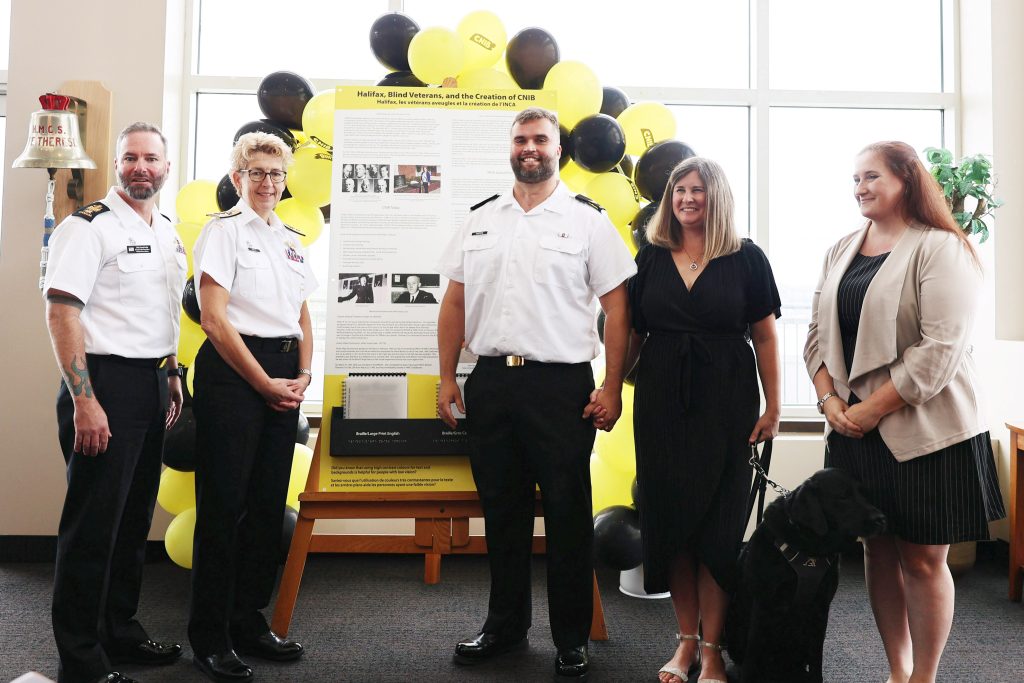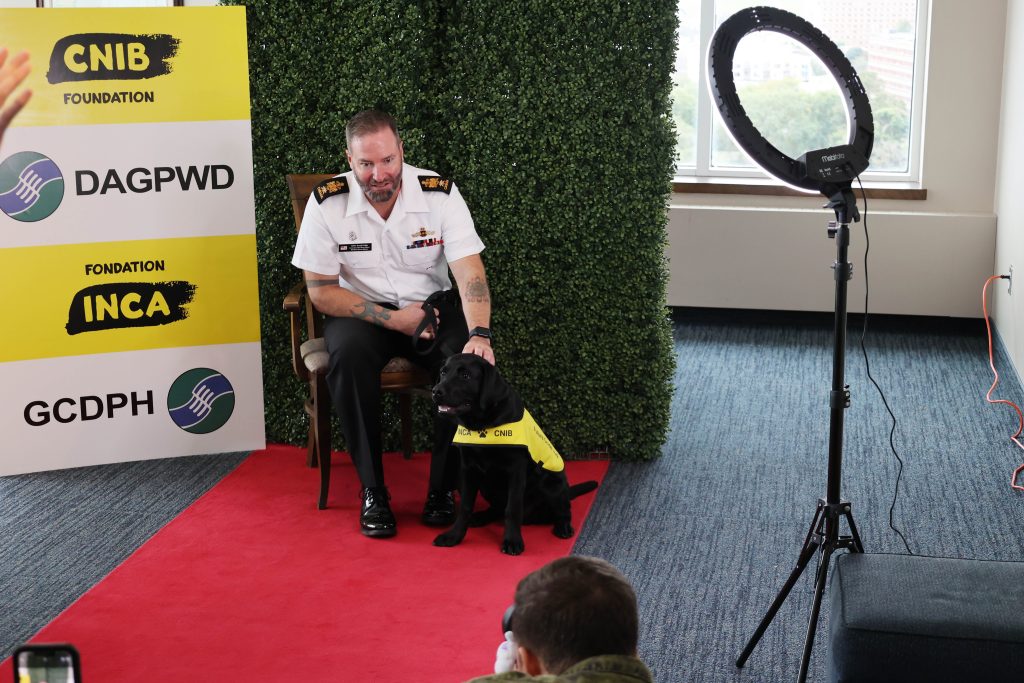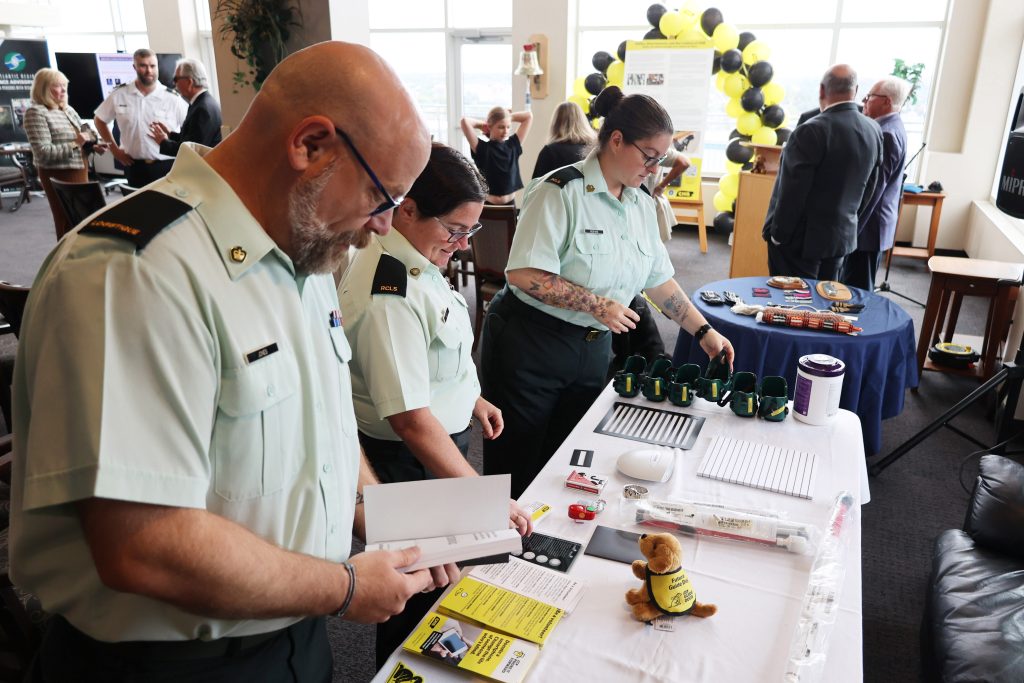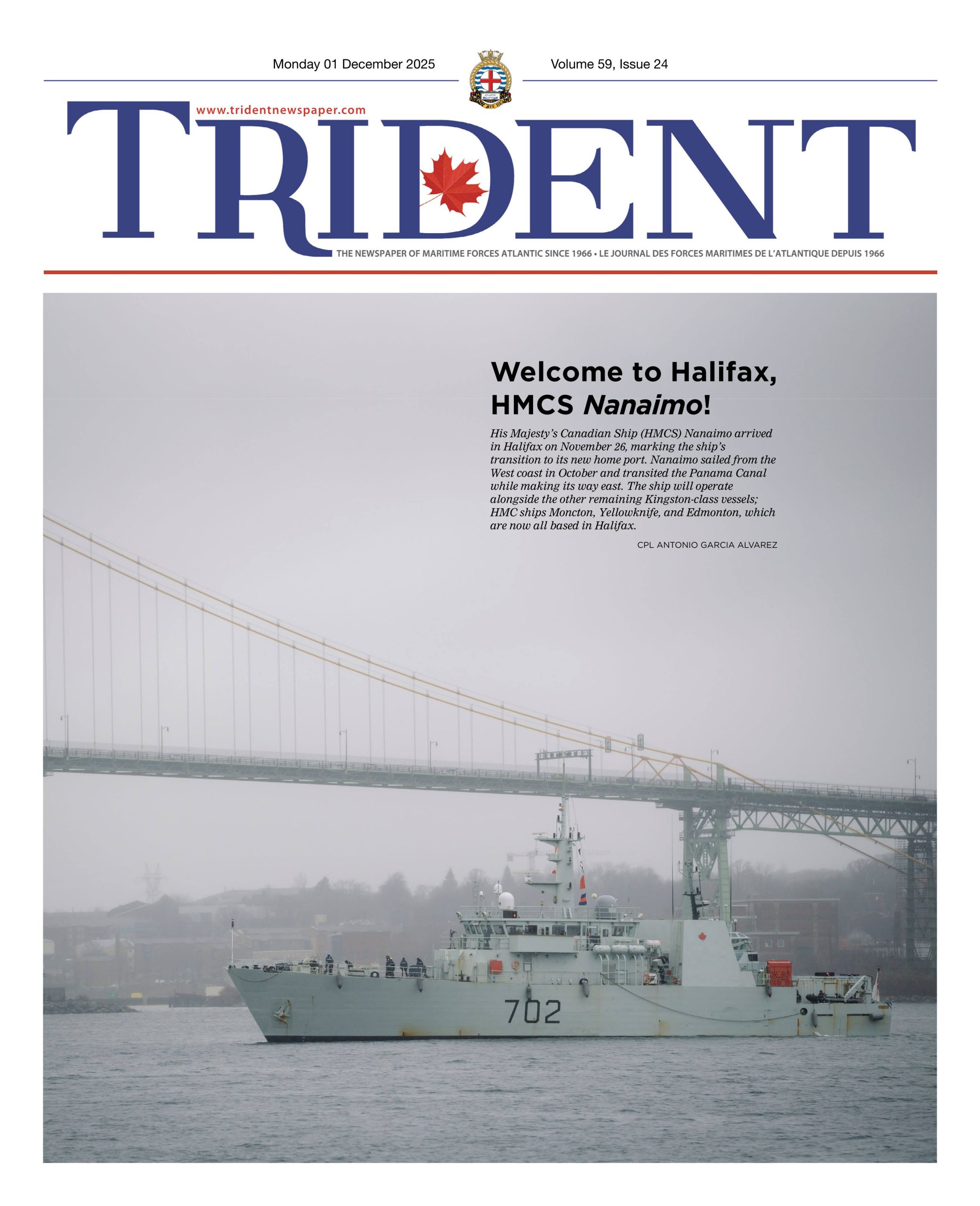
LT(N) CHRISTOPHER LYONS
New Museum panel explores link between veterans and CNIB
By Ryan Melanson,
Trident Staff

LT (N) CHRISTOPHER LYONS
The latest piece in an ongoing partnership between the Naval Museum of Halifax, the Halifax Region Defence Advisory Group for Persons with Disabilities (DAGPWD), and the CNIB Foundation was unveiled in adorable fashion on September 20, as guests joined the CNIB Guide Dog team and their canine trainees at Juno Tower in Halifax.
After the introduction of the Naval Museum’s new display panel titled “Halifax, Blind Veterans and the Creation of CNIB”, attendees were invited to meet a guide dog in training and have their photo taken at the “Puppy Photo Booth.”
The panel itself features information about the founding of CNIB (formerly the Canadian National Institute for the Blind), and seven First World War veterans who played key roles in the organization’s creation. The need for a national non-profit focused on vision loss was identified after high numbers of soldiers returned from the European front with injuries that left them blind or partially sighted. The 1917 Halifax Explosion, which remains the largest mass sight loss event in Canadian history, was also a factor – and the very first CNIB meeting took place on March 18, 1918.
Also included is information on the evolution of CNIB over the years, and the programs and services offered by CNIB today in Halifax and across Canada. The DAGPWD and museum teams worked with CNIB National Archivist Jane Beaumont, who helped compile the material and confirm the veracity of the CNIB story.
Sailor 1st Class Stephen Happe, the local military co-chair for DAGPWD, and his partner Shelley Adams, who works as CNIB’s Manager of Advocacy for Atlantic Canada, have helped establish and expand the partnership between the three groups.
“This panel is a celebration of the accomplishments of seven Canadian First World War veterans, some of whom were injured and blinded in the trenches,” S1 Happe said.
“We hope their story will serve to inspire and motivate sailors, soldiers, and veterans today and in the future.”
Braille and large-print copies of the information included on the panel have also been produced in both English and French and will be available to Naval Museum of Halifax visitors.

LT (N) CHRISTOPHER LYONS
This partnership has also included the development of accessible naval history presentations involving museum staff and artefacts, which have been held at the Naval Museum of Halifax itself and at external sites.
All involved said Maritime Forces Atlantic (MARLANT) leadership has been highly supportive of these recent initiatives. Rear-Admiral Josee Kurtz, Commander of MARLANT and Joint Task Force Atlantic, spoke at the panel’s unveiling, and other senior leaders were on hand.
Naval Museum curator Jennifer Gamble said the work with CNIB and DAGPWD has been rewarding, and she said more collaboration is planned to identify new ways to make the museum space more engaging for people with sight loss and other disabilities.
“Bit by bit, we are trying to make the museum, and the history of the Royal Canadian Navy, more accessible,” Gamble said.






